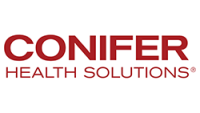3 key interventions to address lagging payer reimbursements
It seems as if commercial payers are doing all they can to keep from reimbursing providers in a timely manner.
According to a recent report by Crowe, 31% of claims submitted to commercial payers in the first quarter of 2023 were not paid for at least three months, as compared with 12% of Medicare claims. Medical necessity denials have risen as well. During the same timeframe, inpatient claims denied due to medical necessity issues were 3.2% among commercial payers and 0.2% for Medicare.
Commercial payers have 12 times the denial rate that Medicare has based on requests for more information, according to Crowe.
The following are three key interventions providers can implement now to help them do just that.
Key intervention 1
Negotiation and contract management optimization
Hospitals can work with hundreds of payers, each with its own contract terms, processes,and ever-changing requirements. Managing these contracts can be challenging for resource-strapped organizations. However, ignoring them can put even greater downward pressure on already tight margins.
Here are five steps providers need to take to effectively negotiate and manage payer contracts:
- Analyze historical reimbursement rates and identify areas for improvement.
- Leverage data analytics to demonstrate the hospital’s positive patient outcomes.
- Develop strong negotiation tactics based on benchmarking and market data.
- Explore alternative reimbursement models that align incentives between the hospital and the insurer, such as bundled payments or pay-for-performance.
- Regularly review and renegotiate contracts to ensure they reflect the hospital’s evolving services and patient population.
Key intervention 2
Claim denial prevention and revenue cycle efficiency
Ensuring claims are correct and complete upon first submission is critical to a provider’s cash flow and bottom line. If any mandatory or conditional information is missing, the claim will be rejected. Top issues that lead to claim rejections and denials include missing or invalid claim dates, prior authorization and precertification issue, and inaccurate eligibility verification information. These three issues alone are responsible for more than half of all denials, and all are caused by inefficient workflows.
The good news is that the vast majority of denied claims are preventable. Yet, most providers address denials reactively, after they happen. Instead of taking steps to prevent denial-related revenue loss on the front end, they spend unnecessary effort recovering revenue on the back end. This is a costly, resource-intensive process, which is especially problematic given our industry’s current labor shortage.
Here are four steps providers can take to prevent denials on the front end of the revenue cycle:
1. Use automation technology to:
- Streamline the patient access process to ensure insurance coverage information and patient demographics are accurate and complete.
- Proactively scrub claims to identify and flag potential issues so they can be corrected before submitting them to the payer.
- Perform root-cause analysis and predictive analytics to identify trends and proactively address them.
- Automate the appeals process, especially for bulk denials coming from a single payer.
2. Provide ongoing coder education to improve coding accuracy and productivity.
3. Require coders to maintain certification.
4. Implement key performance indicators (KPIs), scorecards and incentives to drive accountability among coders.
Key intervention 3
Value-based care integration and quality improvement
In 2022, just 43% of providers were participating in quality-based alternative payment models. The same percentage said they received just 10% of their revenue from value-based payments. While adoption may be slow, these alternative models are here to stay.
Now, more than ever, hospitals should implement quality improvement initiatives that lead to better patient outcomes, reduce healthcare costs and support value-based payments. Doing so will make it easier to demonstrate improved patient outcomes and to negotiate for more favorable reimbursement rates.
The following four steps can help hospitals get started:
- Collect and analyze data on KPIs related to patient satisfaction, readmission rates and avoidable complications.
- Demonstrate the hospital’s commitment to providing cost-effective, high-quality care to commercial insurers.
- Engage in collaborative discussions with insurers to align incentives and develop shared savings models that reward positive outcomes.
- Participate in alternative payment models like accountable care organizations (ACOs) that emphasize value and shared financial risk.
Now is the time to act
We can debate the reasons why commercial payers are delaying payments and denying more claims. It could be that they’re suffering the same labor shortages as everyone else, causing backlogs in claims processing. Or it could be that they’re using more sophisticated technology to identify and flag potential claims issues for review. Regardless of the cause, it is unlikely the trend will end anytime soon.
Providers need to take steps now to mitigate further damage and to protect their bottom lines. Implementing these three key interventions is a great place to start.






